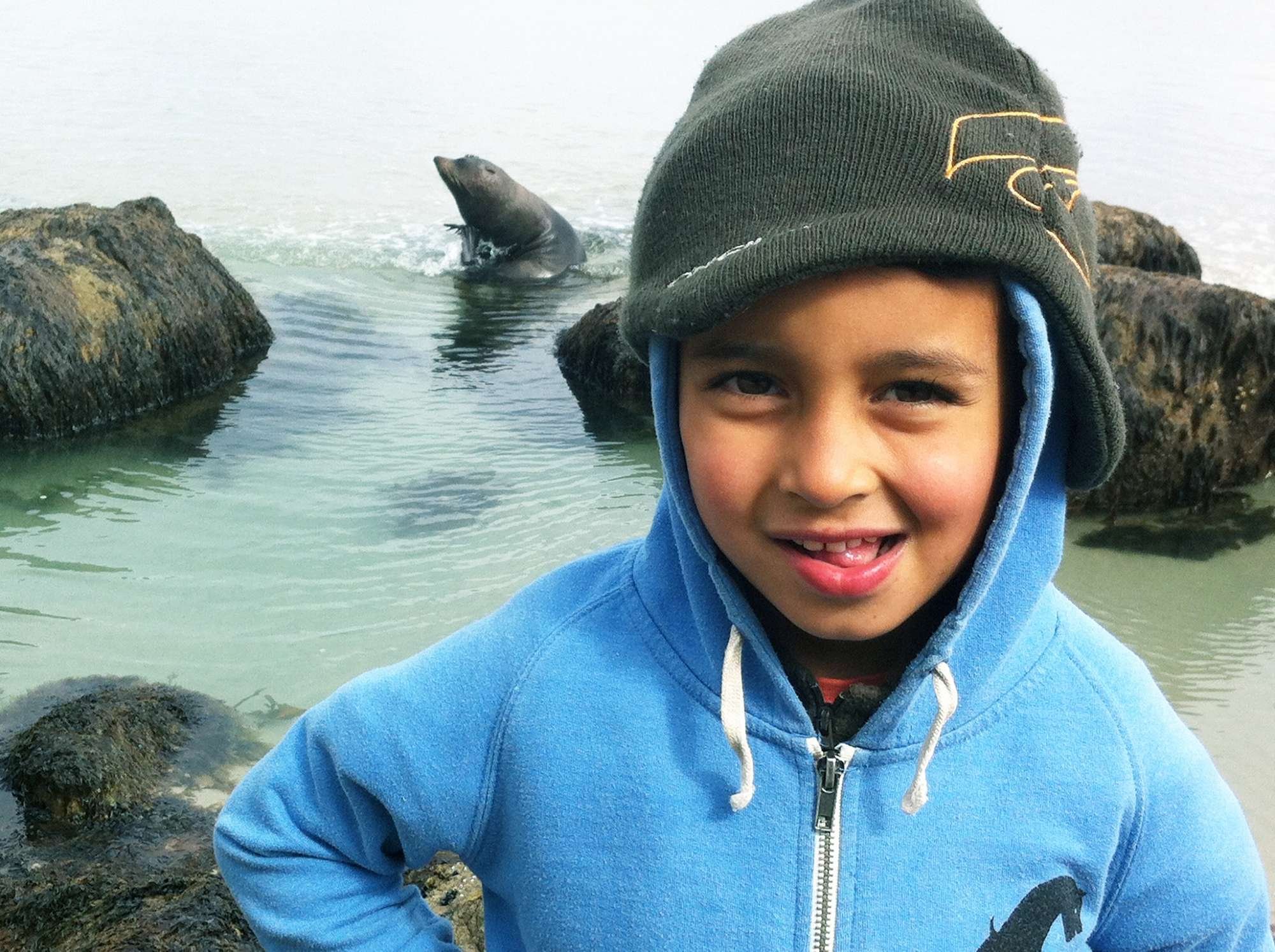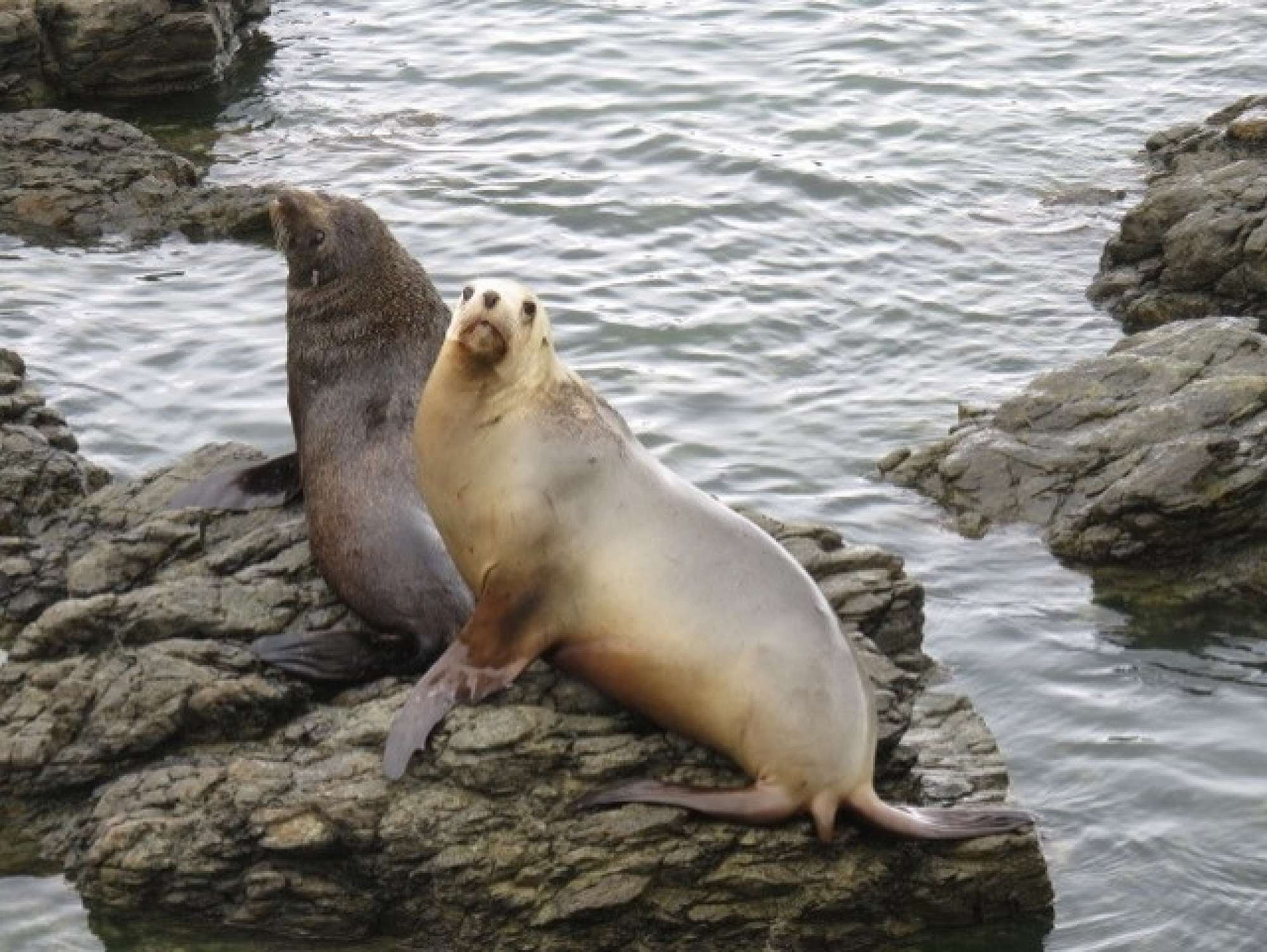Fur Seal or Sea Lion – How to Tell the Difference
Suzanne Middleton, Wild Dunedin — Mar 28, 2020
Can you tell the difference between a New Zealand sea lion/rāpoka/whakahao and a New Zealand fur deal/kekeno? Amelia Saxby from the Dunedin based NZ Sea Lion Trust says that the best way to tell the difference is from the face.
Beau Hayden with NZ Fur seal/kekeno at Allans Beach on Otago Peninsula. Image by: Peter Hayden
First sighting of Kotahi the female NZ sea lion (honey coloured) and her NZ fur seal friend. Hanging out with fur seals has its advantages for this sea lion. Image by: John Burke
Sea lions have a bear face and fur seals have a more pointed dog face and much longer whiskers.
New Zealand fur seal. Image by: Izumi Schmidt-Uchida
Adult male sea lions are huge and dark coloured.
A male New Zealand sea lion… the most threatened sea lion species due to their declining numbers and restricted breeding range. Image by: Department of Conservation
The females are a beautiful silvery grey and much smaller.
NZ sea lion. Image by: John Burke
Often sea lions are on the sand and in the sand dunes, and fur seals are on the rocks. But,at Allans Beach for example, to the left of the beach you can frequently see seals on the sand.
Ben is doing the right thing staying at least ten metres from the NZ sea lion but still getting a good close view with his binoculars. Image by: Bryony Alden
Whenever you see fur seals, sea lions or leopard seals at the beach, you should stay at least 10 metres away from them. But if the sea lion is on the move, then keep 20 metres away, and if you encounter one in the water, stay calm, move slowly away and don’t engage with it. A sea lion can behave like an inquisitive or playful labrador, responding to your noise and movement, so it’s best to act very low key around them. And if they’re exiting the water, don’t take refuge in the sand dunes because they could well be heading there too. Walk along the water’s edge away from them.
In summer a number of female sea lions arrive on our Dunedin beaches to have their pups.
Research on breeding female sea lions on the Auckland Islands, Stewart Island and on the Otago coast has shown that the local ones swim shorter distances to feed, dive less deeply for food, and produce richer milk for their pups. They also begin breeding a year earlier than the ones further south because they are larger. So they do very well here.
If you see anyone throwing stones at a sea lion or hurting them in any way, you could try explaining that the NZ sea lion is the rarest species of sea lion in the world with roughly 12,000 left. The sea lion will probably have swum a very long way before it lands on the beach and it needs to rest. We are incredibly lucky to have them visiting our beaches, and we should appreciate that they are a very rare wild animal. It’s important that we educate people about our wild animals so they will understand and respect them.
If they persist you can take photos or video and call the DOC Hotline 0800DOCHOT 0800362468.
Sea lion pups in Otago and the Catlins are tagged and microchipped. If you see a sea lion that has a tag and you can zoom in to take a picture, please send the image with the location, date and time to the New Zealand Sea Lion Trust on Facebook, or email it to info@sealiontrust.org.nz. If you come across an injured or dead sea lion call the DOC Hotline.
We are so lucky to live in the Wildlife Capital of Aotearoa.







